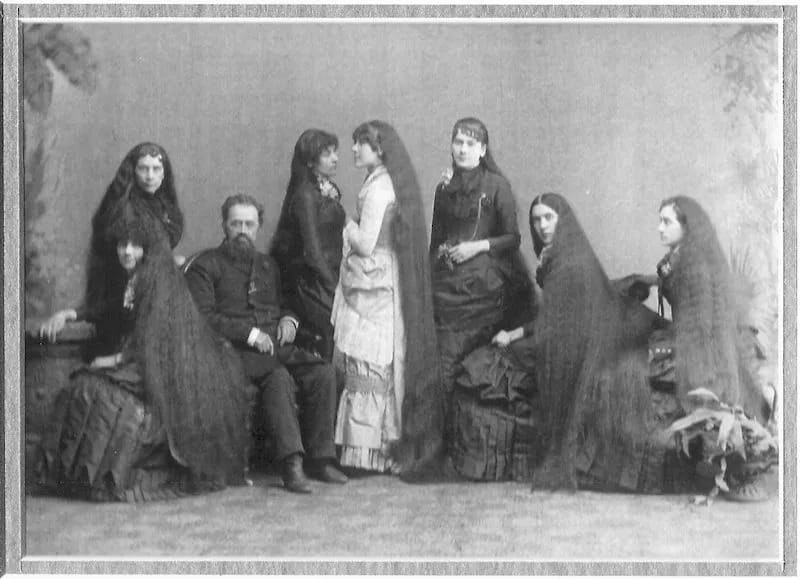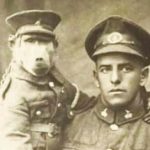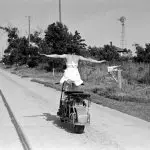The Victorian era (1837-1901) highly valued women’s long hair as a symbol of femininity and status. Most women had long hair, often styled into intricate forms. They preferred healthy, glossy, soft, and smooth hair, often using oil for smoothness.
During the day, women used to don hairnets to keep the hair from coming undone. While loose hair was romanticized, it was typically kept private.
Just as with women today, not everyone had naturally thick hair, so false hair became popular. Poorer women, facing financial hardships, often sold their hair.
Hairstyles of the time reflected the era’s social aspirations and changes. Keep scrolling to uncover the distinct and captivating Victorian hairstyles.
The Dawn of Elegance: Early Victorian Hairstyles (1837-1850)
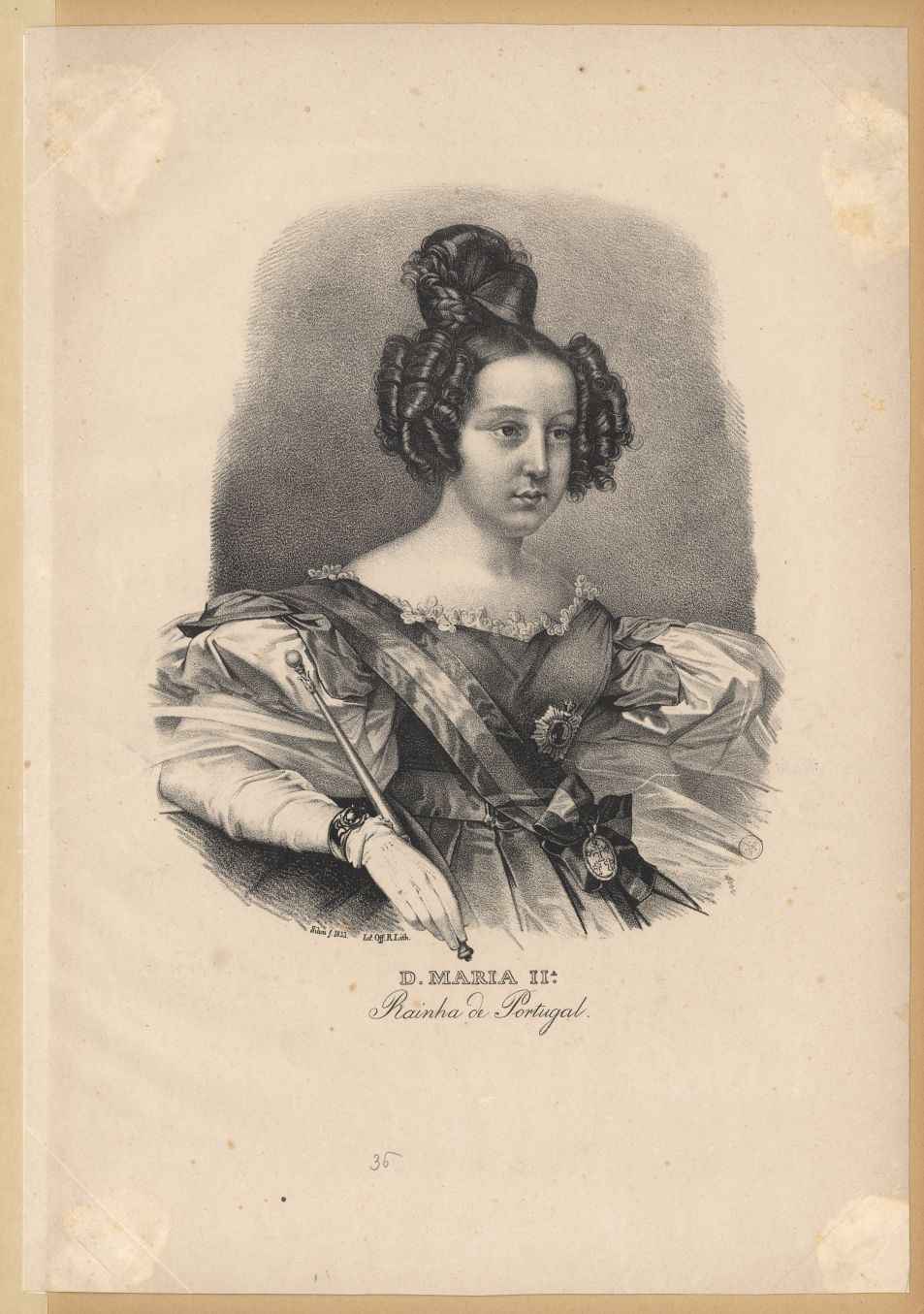
The early Victorian period featured simple and elegant women’s hairstyles. One of the most iconic styles was the Apollo Knot, popular in the 1820s and 1830s.
Hair was parted into three sections: the front was curled and styled to the sides, while the back was combed high into a bun or “crown.” This bun, sometimes called a “basket” when made from braids, was often decorated with flowers, feathers, jewels, and braids.
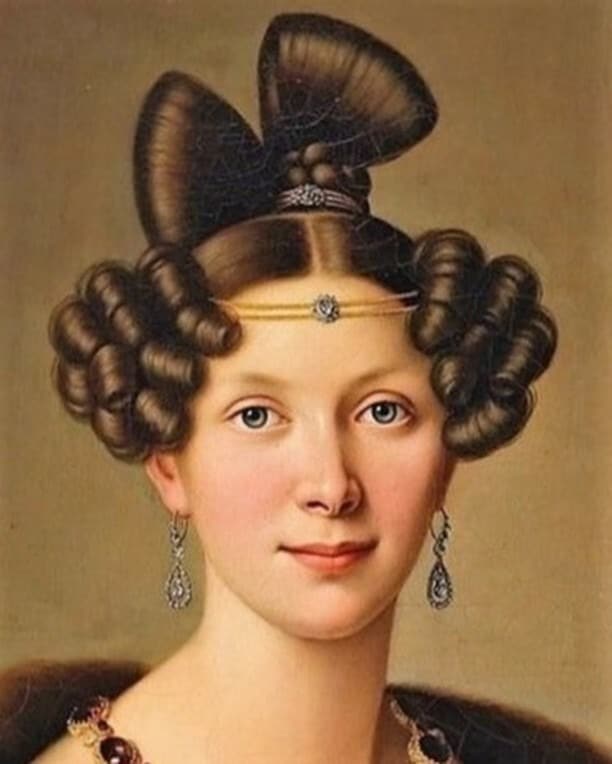
The Apollo Knot got its name from the Apollo Belvedere statue. This hairstyle appeared around the mid-1820s, following a trend from the early 19th century rather than being a new style. Women typically styled their hair with a straight parting, sometimes using a side parting called “Whipped Cream.”
By the 1840s, “barley curls” became popular, with long ringlets worn mainly by children becoming a trend for adults, and chignons moved to the back of the head.
Women adorned their hair with ribbons, flowers, and simple combs to add charm and personal flair without overshadowing the natural elegance of their hairstyles. Greco-Roman aesthetics and the conservative trends set by Queen Victoria influenced these early Victorian hair fashions.
Romantic Waves: Mid-Victorian Hairstyles (1850-1870)

As the Victorian era progressed, hairstyles grew more elaborate and romantic. In the 1850s, hoop skirts became fashionable, and hairstyles expanded to match. Women started parting their hair in the middle and padding the sides to create large wings or rolls.
Princess Eugenia influenced hairstyles in the 1850s and 1860s. She often wore her hair with a center part and ringlet curls over one shoulder.

For special occasions, women added flowers to their hair. Variations included ringlets on both sides of the face for young girls and chignon buns and twisted knots at the nape of the neck for women.
Partially covering the ears became the trend. Corded silk snoods were popular for daywear, covering only the chignon or bun.
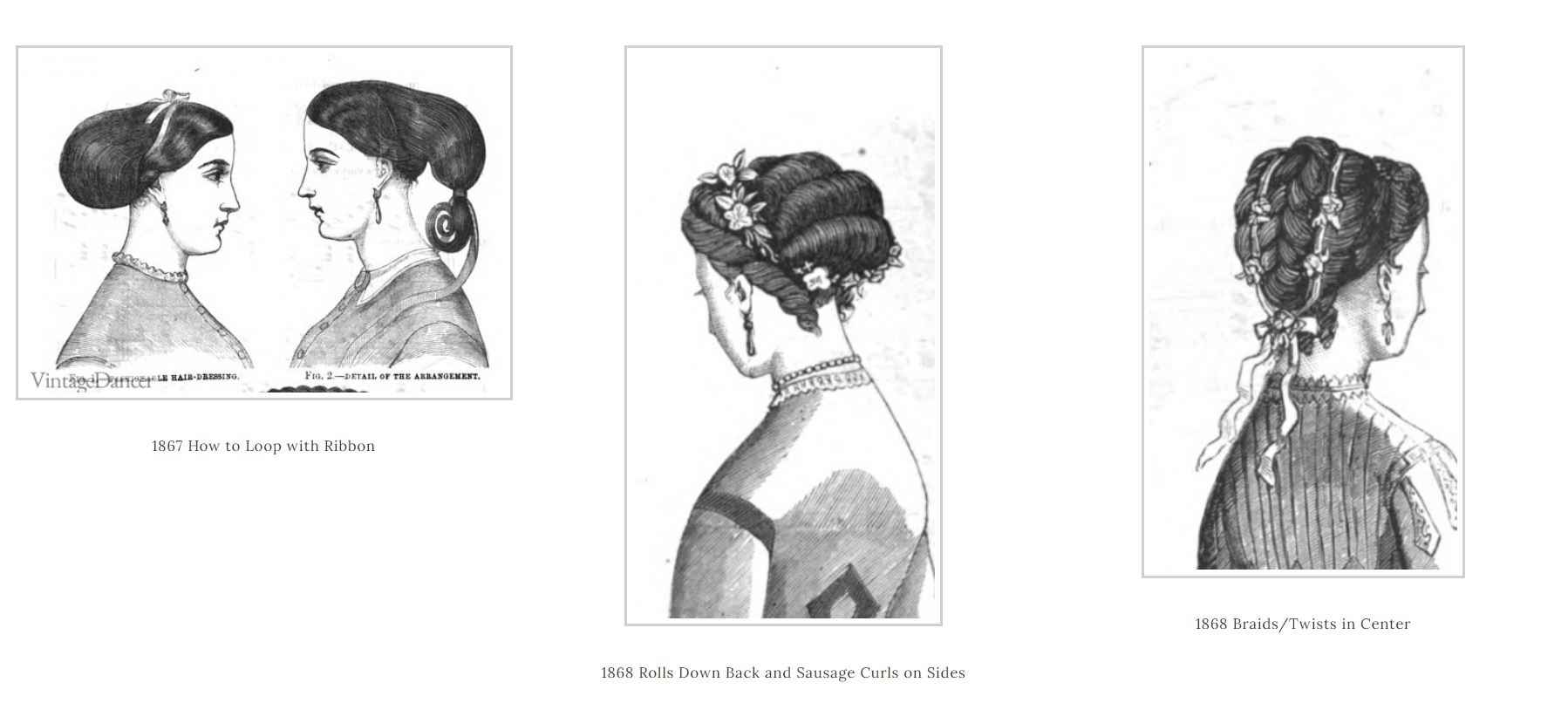
In the 1860s, as dress styles changed, chignons moved to the back of the head. The net-covered chignon was coiled loose and wide to make the hair look bigger. Hair was often pulled back smooth, with tight rolls framing the face.
Braids starting above or below the ears and draped to the back resembled a short pageboy style. Hair nets made of ribbon or crochet yarn, sometimes enhanced with beads, circled the head, or covered the loose chignon.
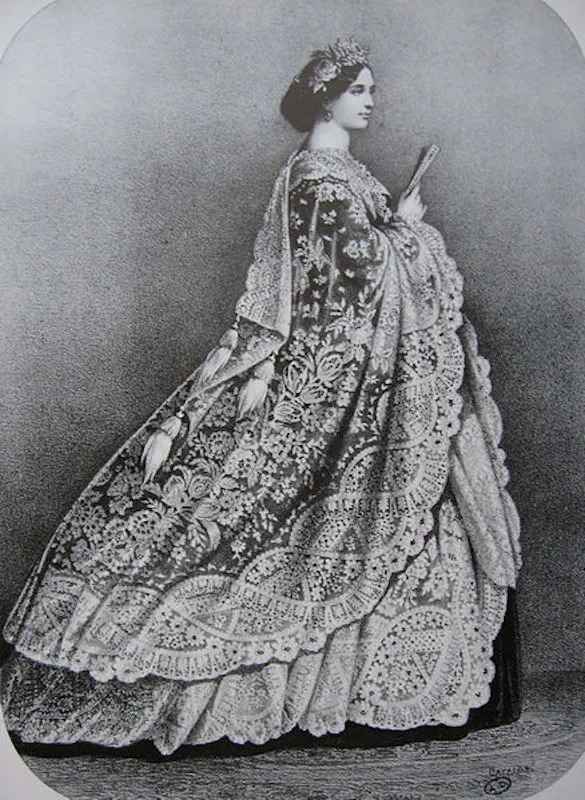
Invisible hair nets held hair low on the neck in a horseshoe shape. Side and back curls were worn for both day and evening looks, with hot curling irons essential for creating waves and corkscrew curls.
Grandeur and Volume: Late Victorian Hairstyles (1870-1901)

In the late Victorian era, women’s hairstyles embraced grandeur and volume. The 1870s featured fancy hairdressing with long curls, braids, and twists cascading down the back, and the front waved or frizz-curled for a tousled look.
Mature women wore their hair high with ringlet curls, while long sausage curls were also popular, either held back with combs or hanging freely.

By the 1880s, hairdressing became fancy with the introduction of pompadours, often accompanied by bangs. Inspired by Madame de Pompadour, this style involved sweeping the hair upwards and wearing it high over the forehead, volumized with hairpieces for a dramatic effect.
The 1890s saw hair piled high on the crown with tight coils and curls and fluffy bangs. The Gibson Girl Look replaced tight curls with loose bouffants and a small bun.
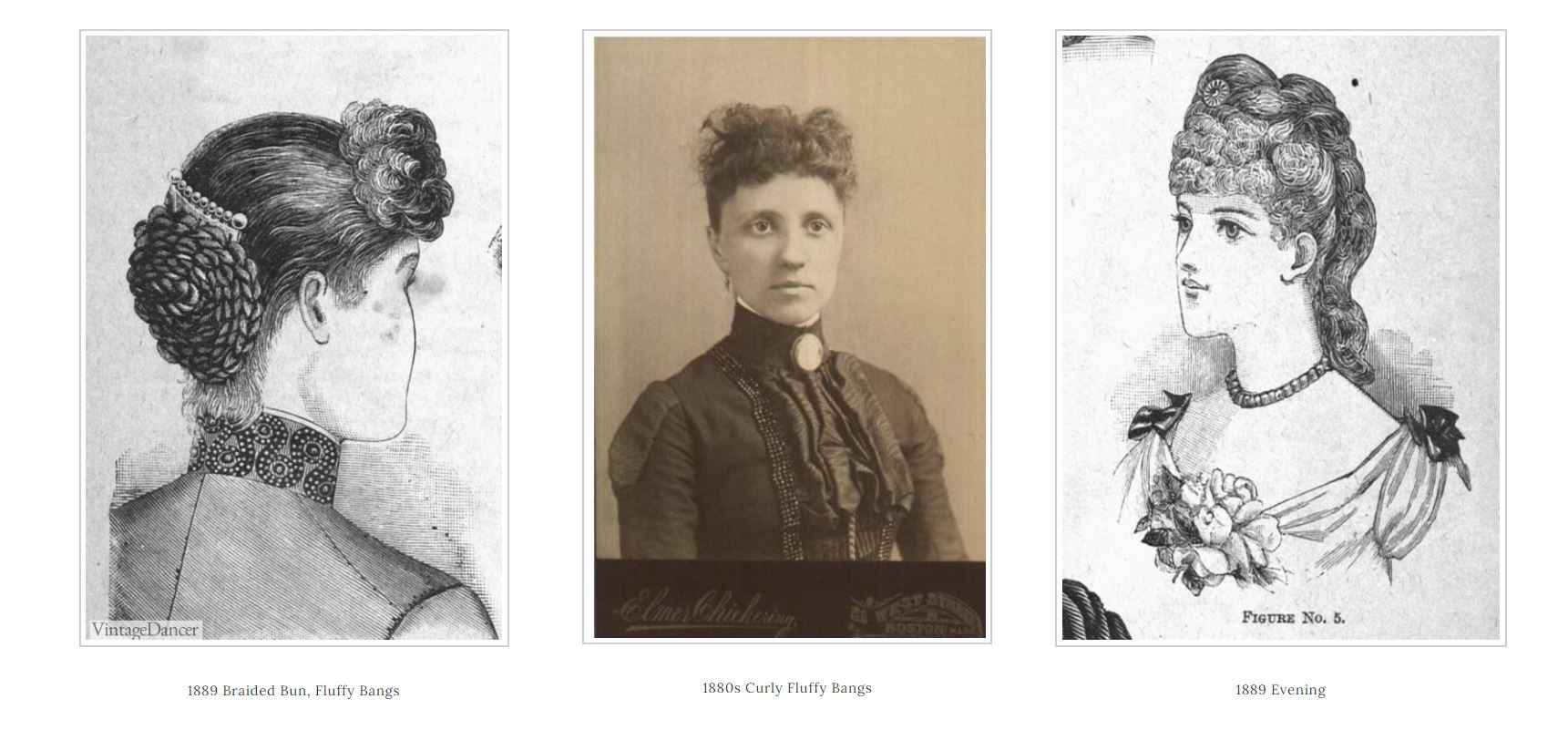
More Photos of Victorian Hairstyles
1.
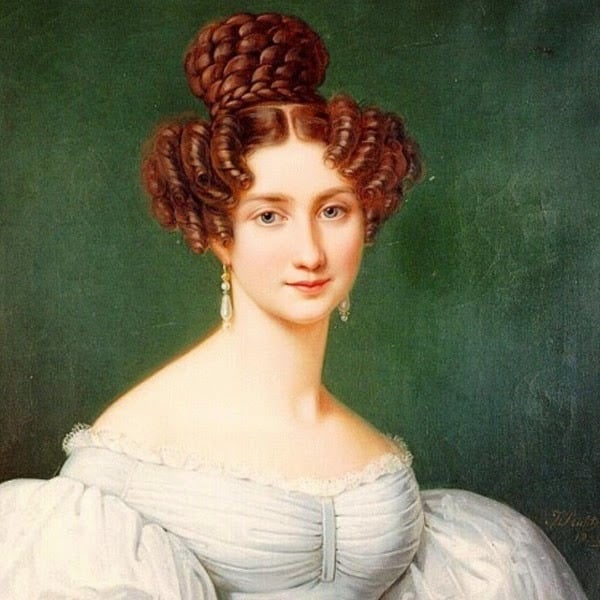
2.

3.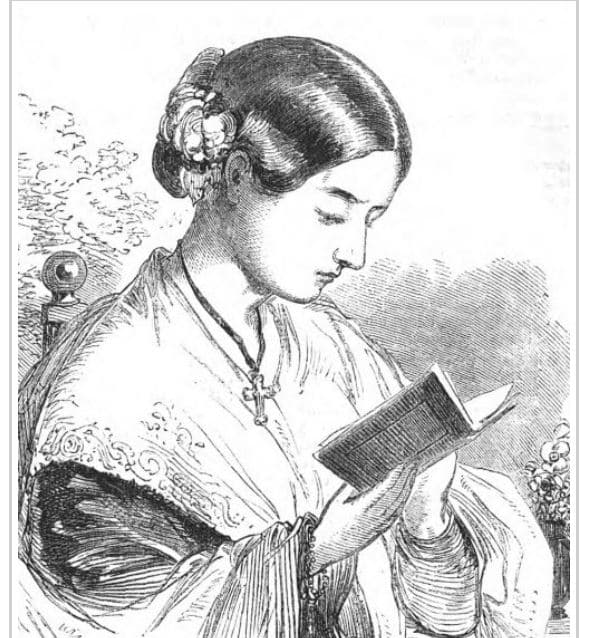
4.

5.
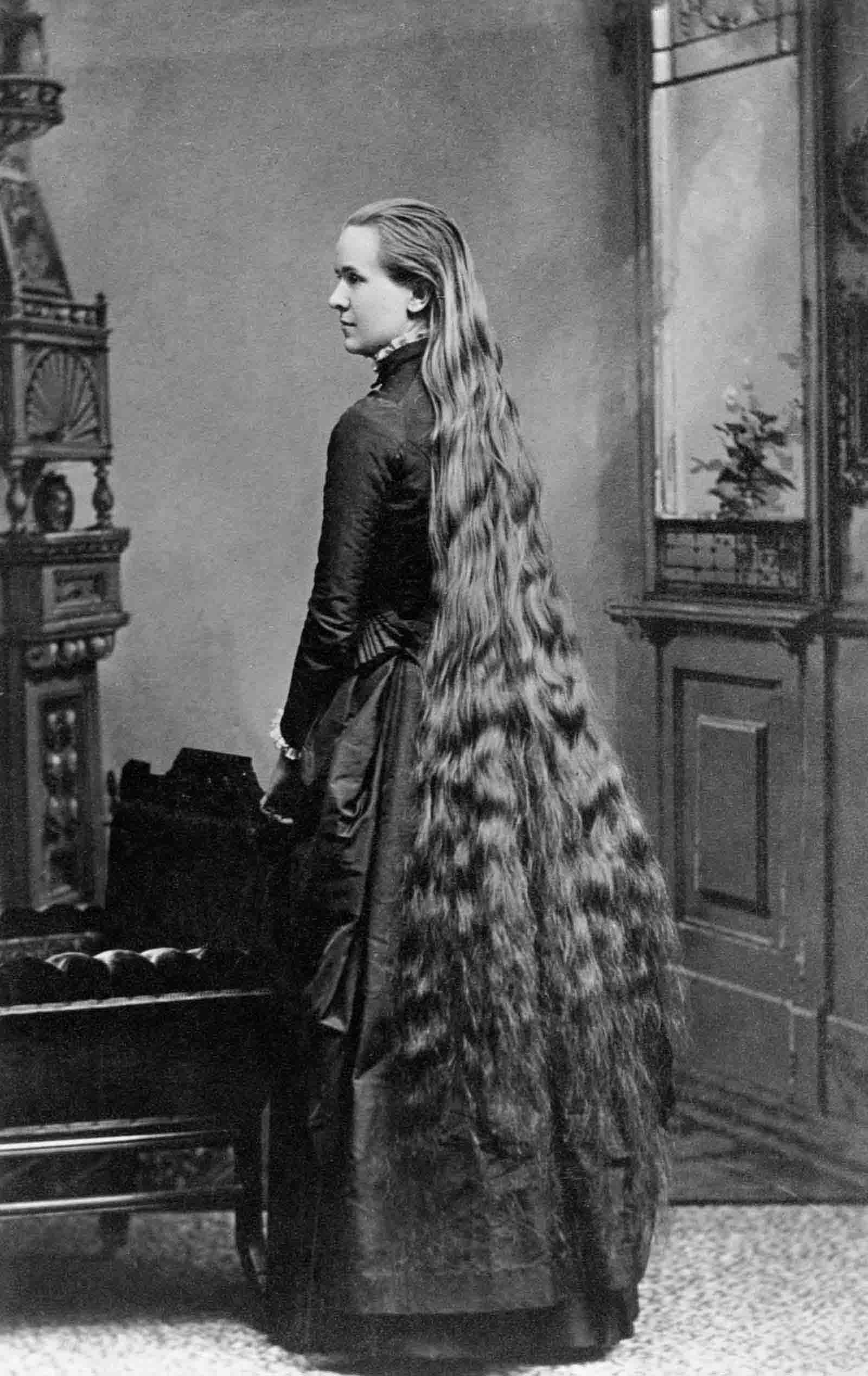
6.

7.
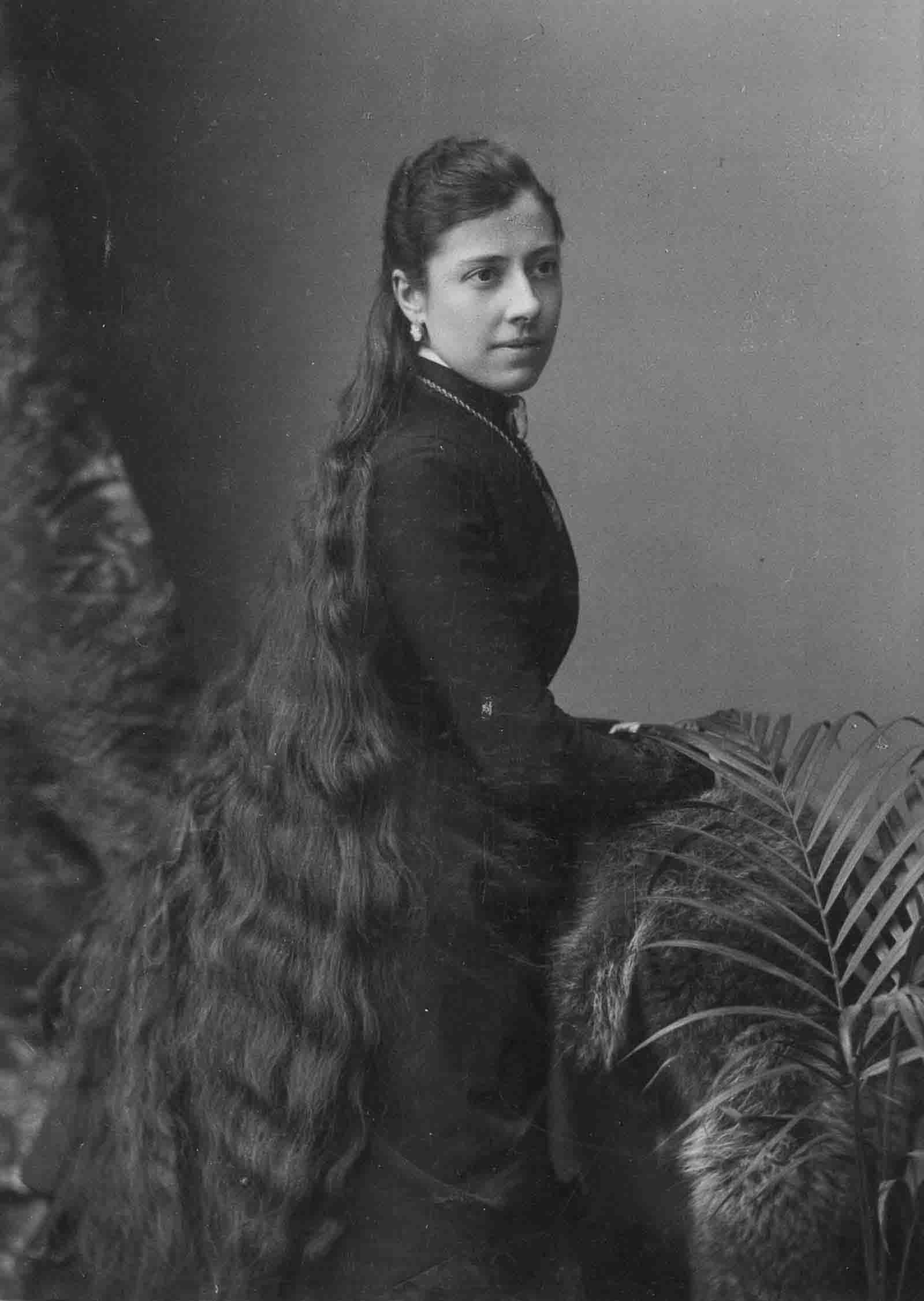
8.
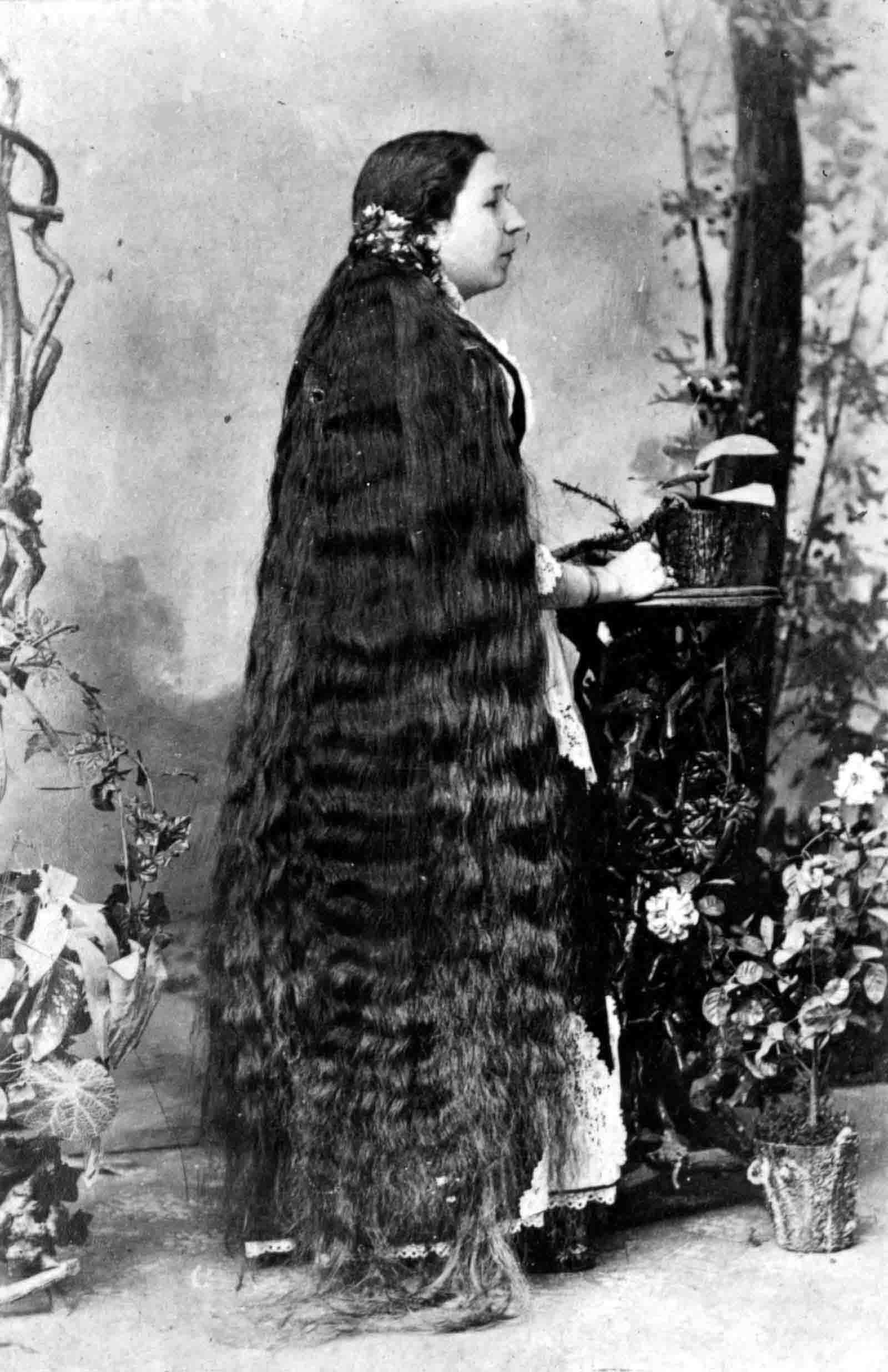
9.
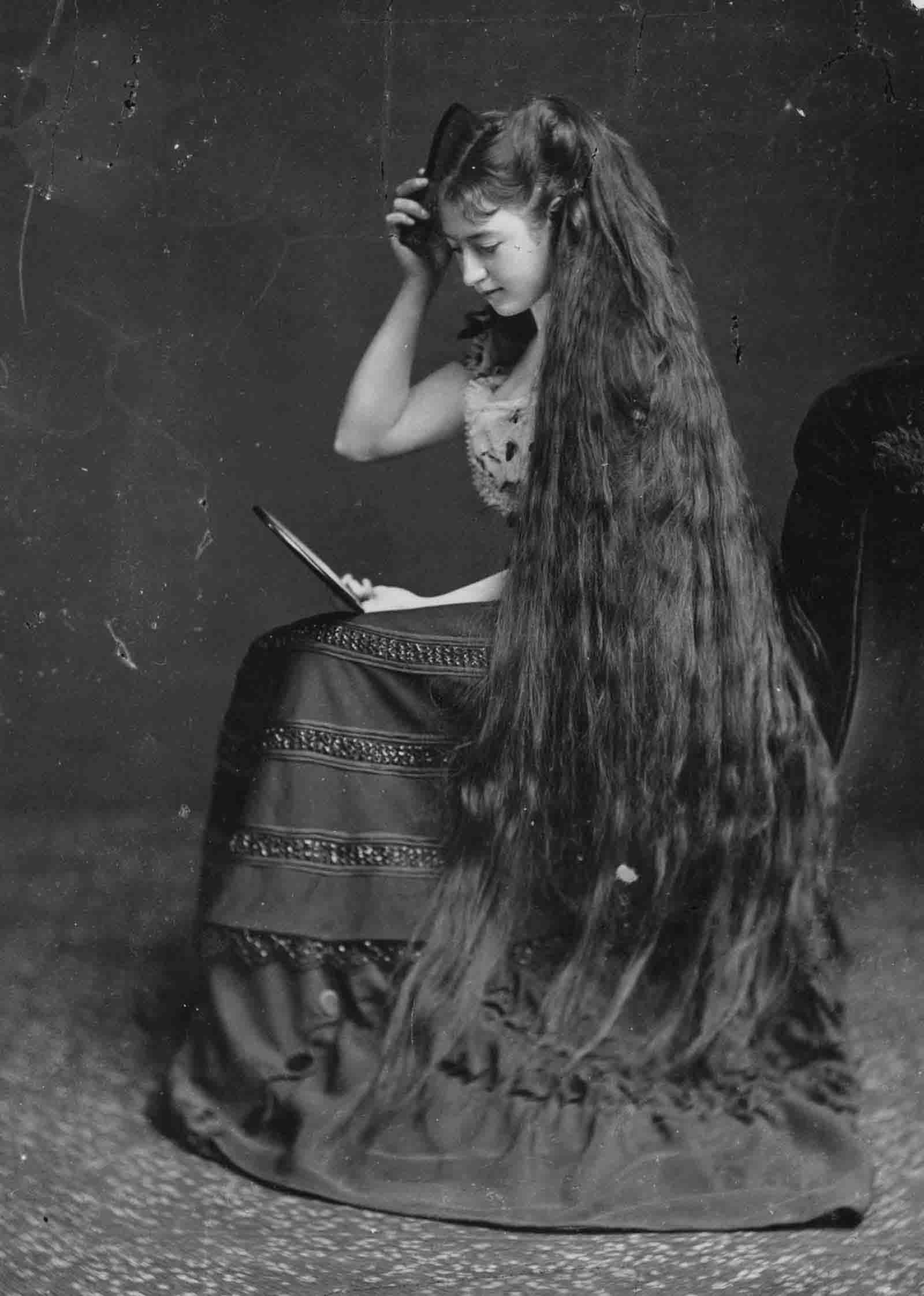
10.
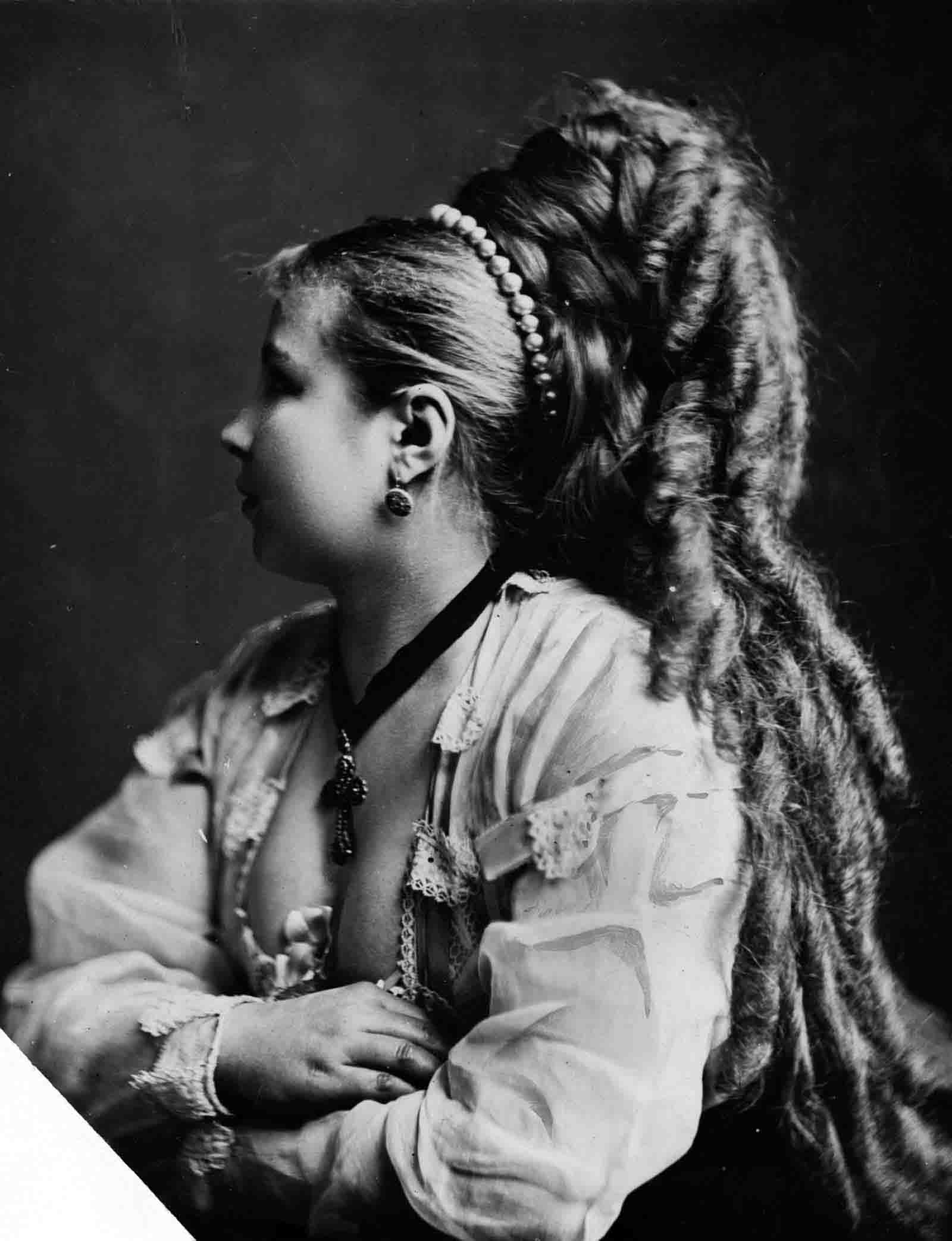
11.
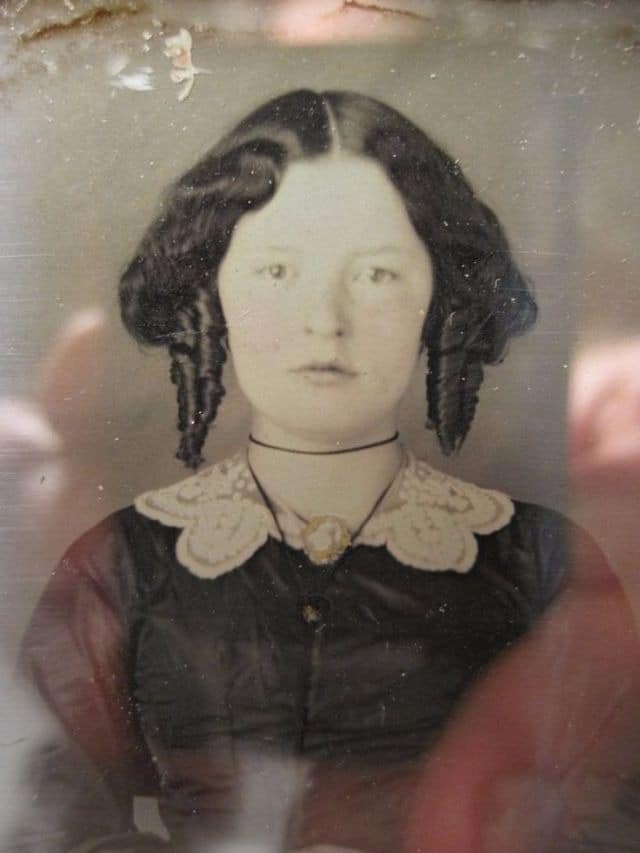
12.

13.
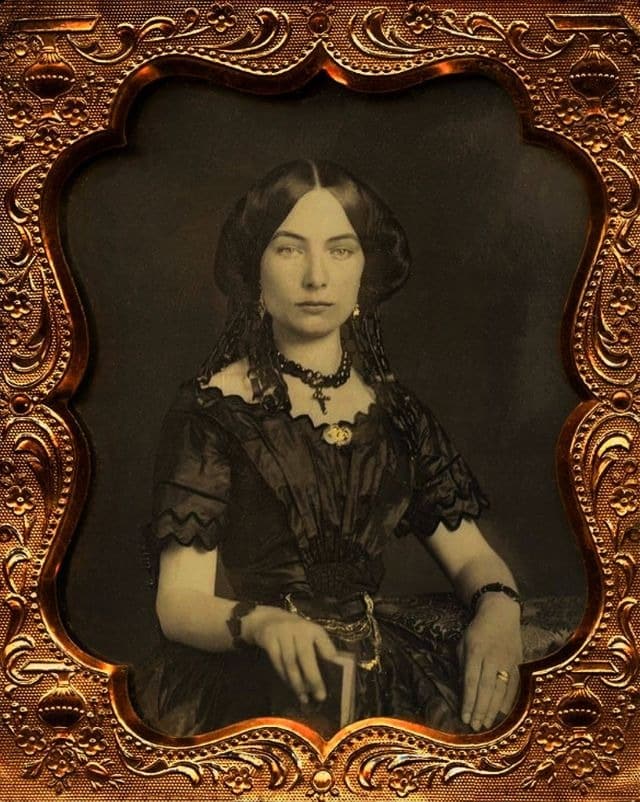
14.
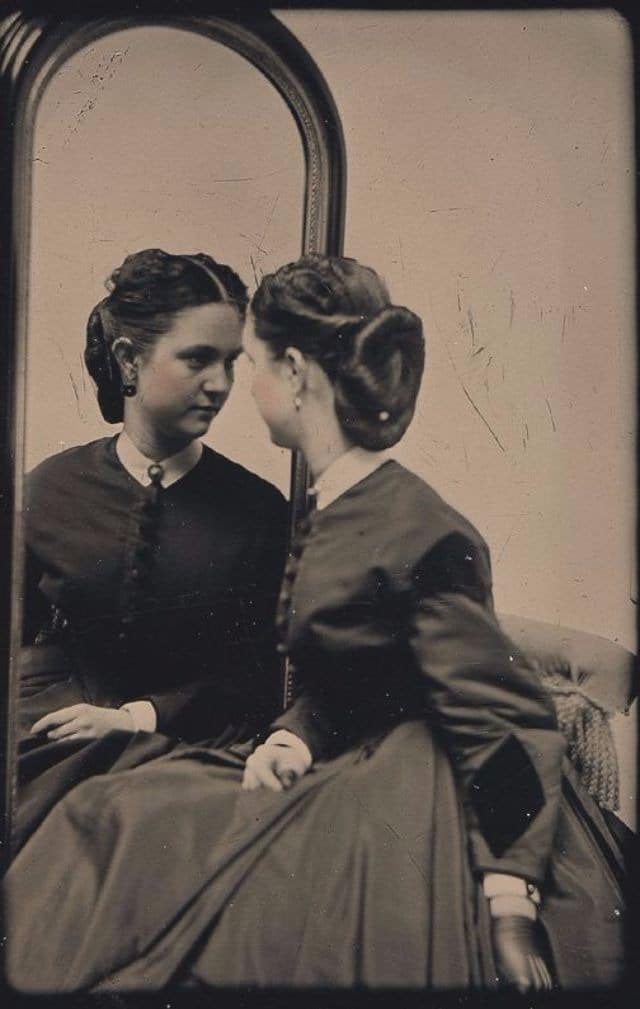
15.
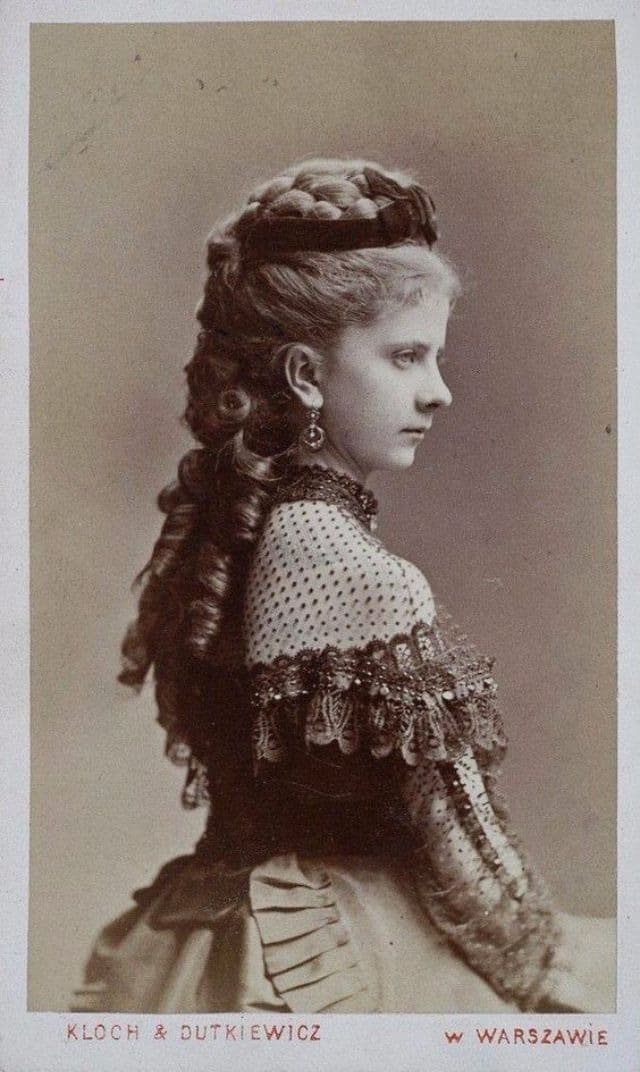
16.
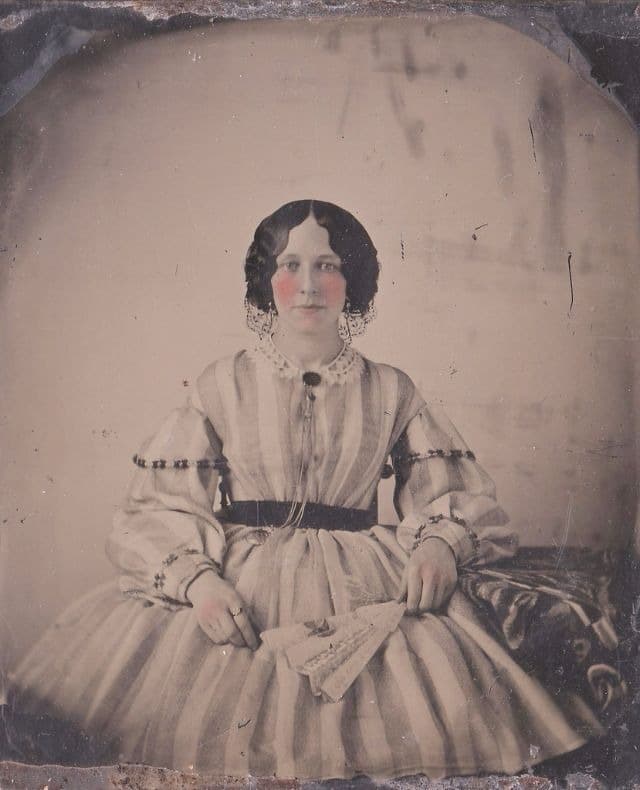
17.

18.

19.

20.
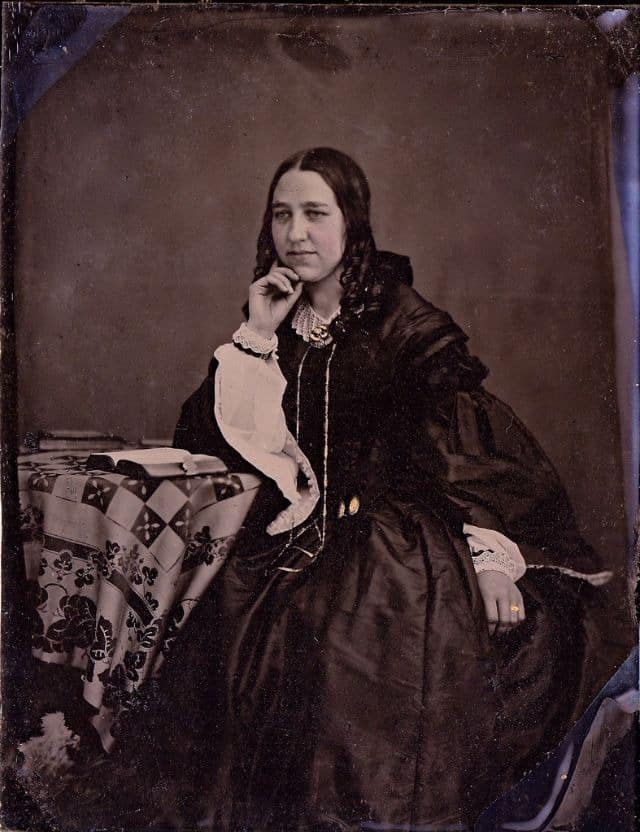
21.
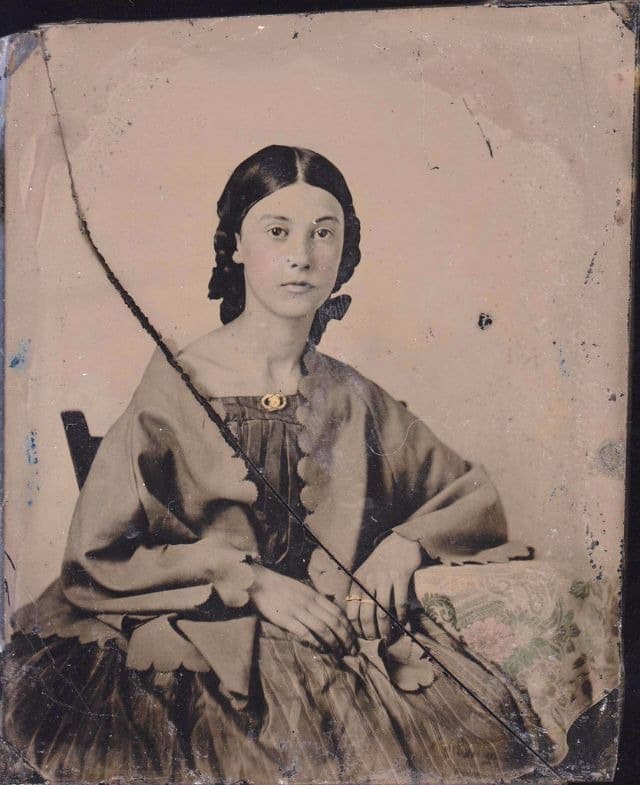
22.
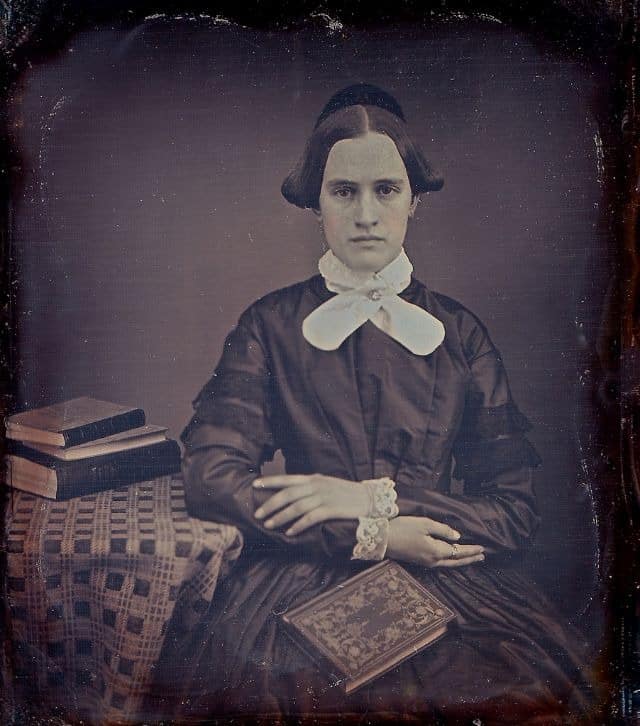
23.
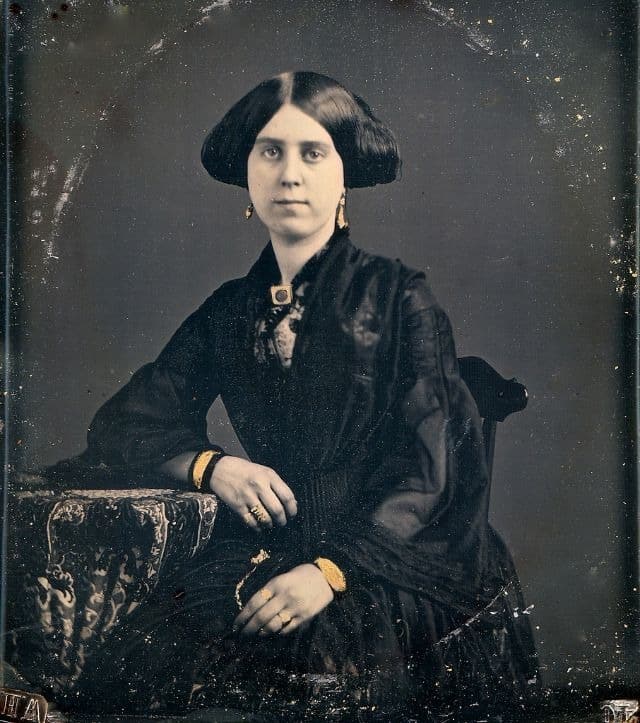
24.
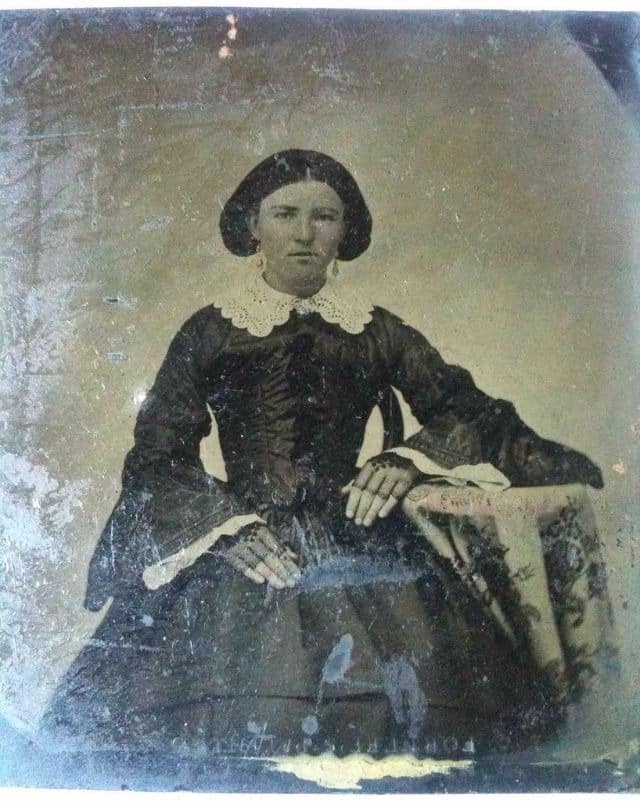
25.
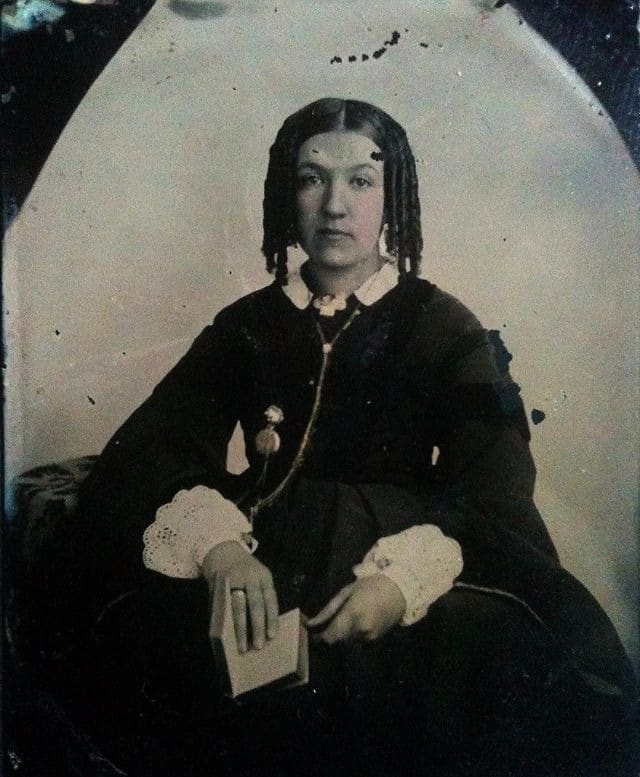
26.
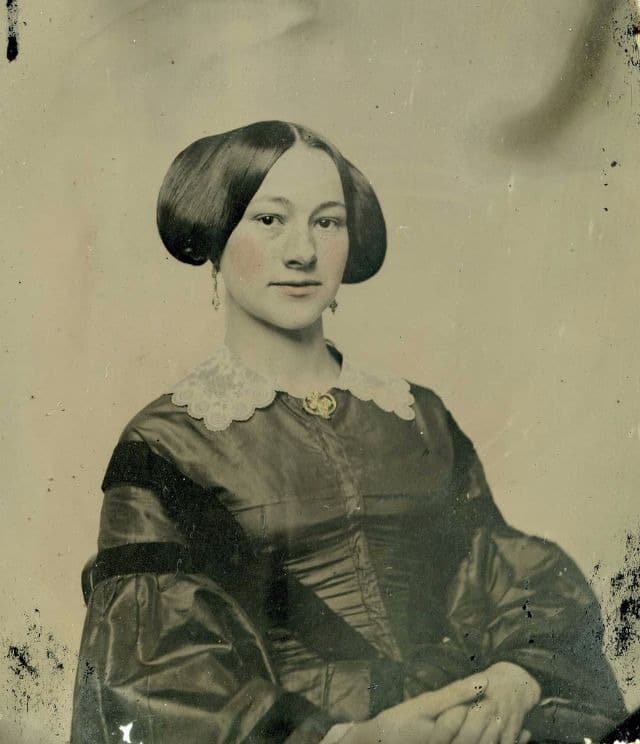
27.
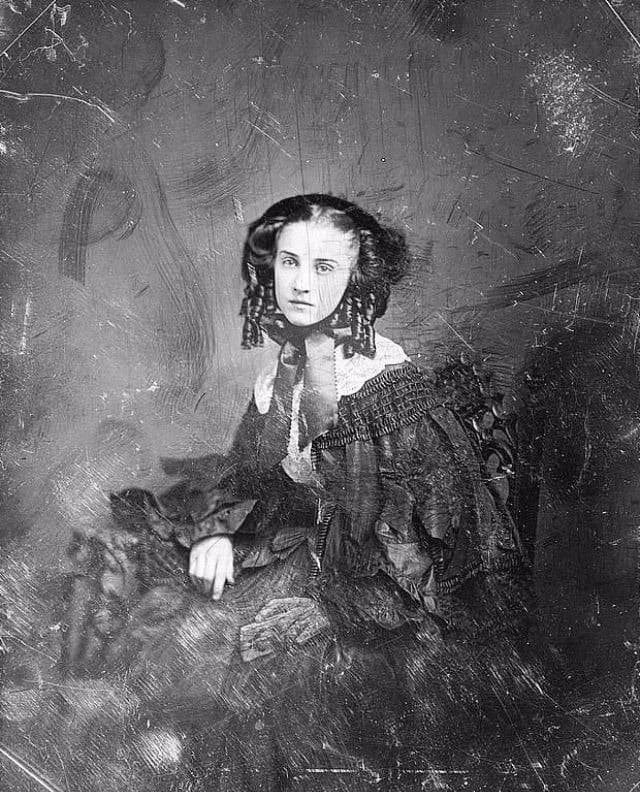
28.
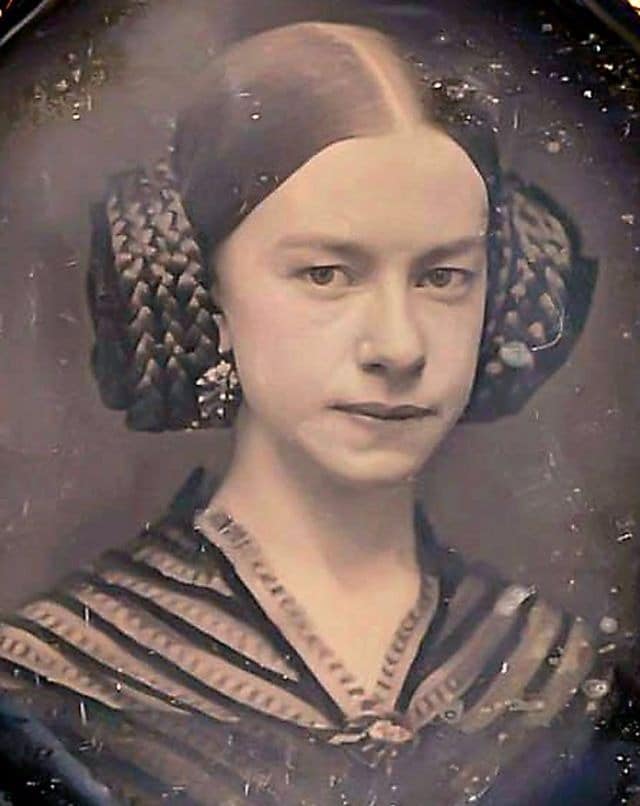
29.

30.
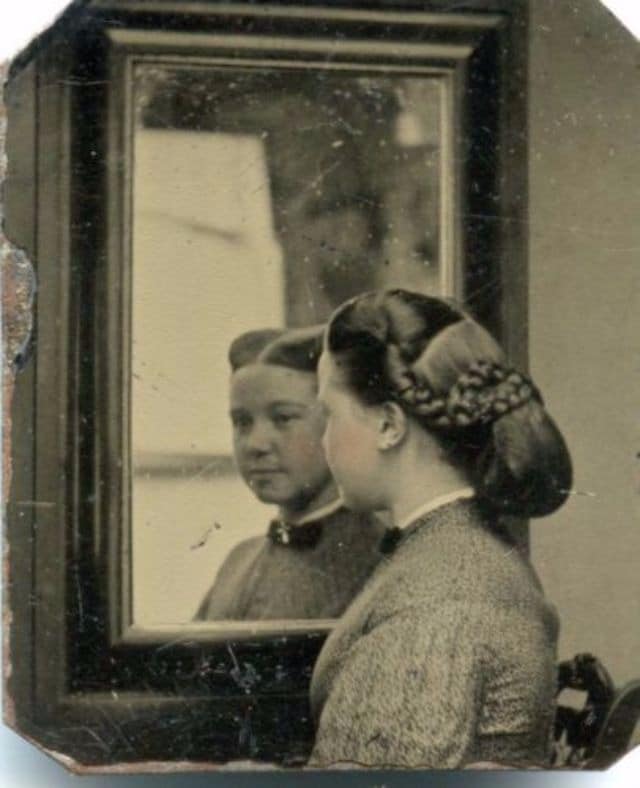
31.
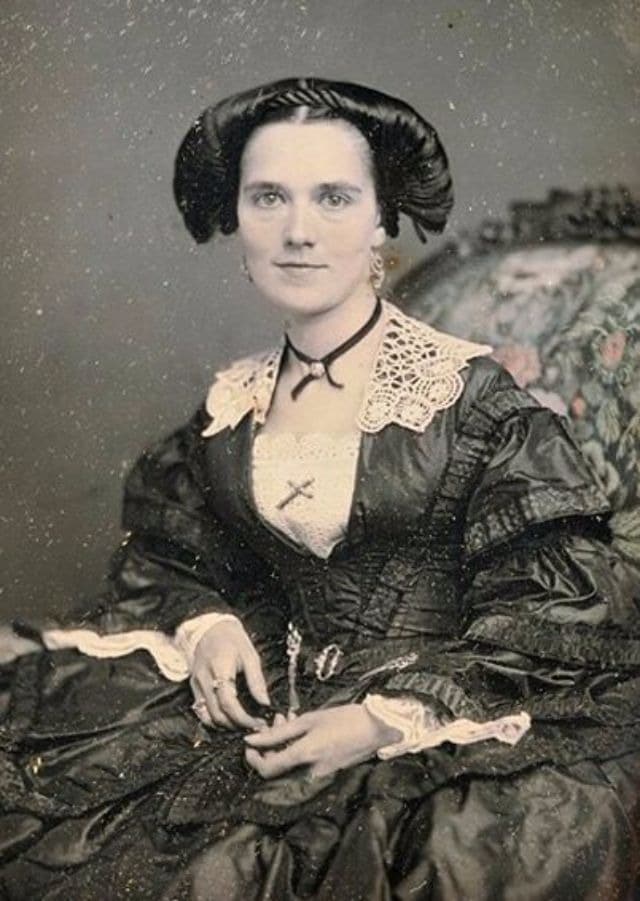
32.
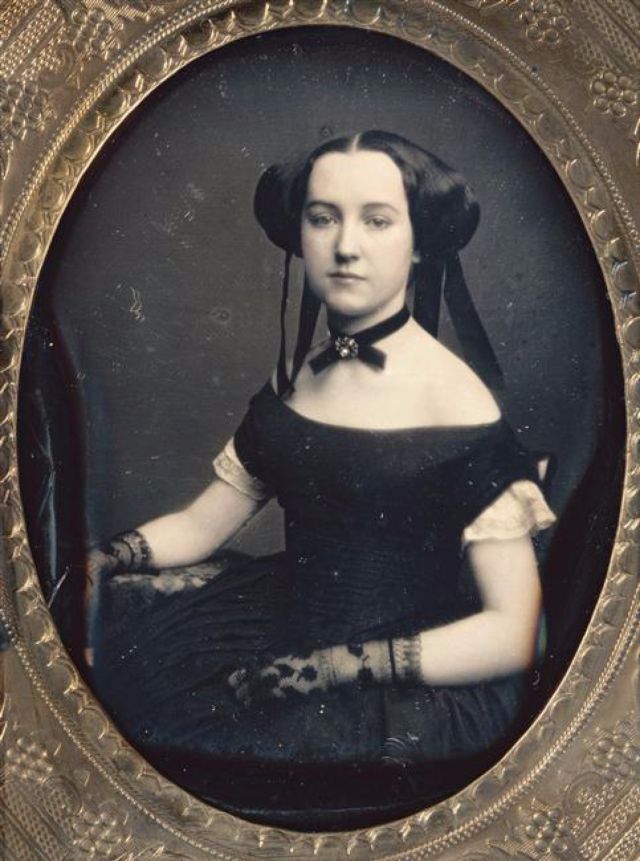
33.

34.
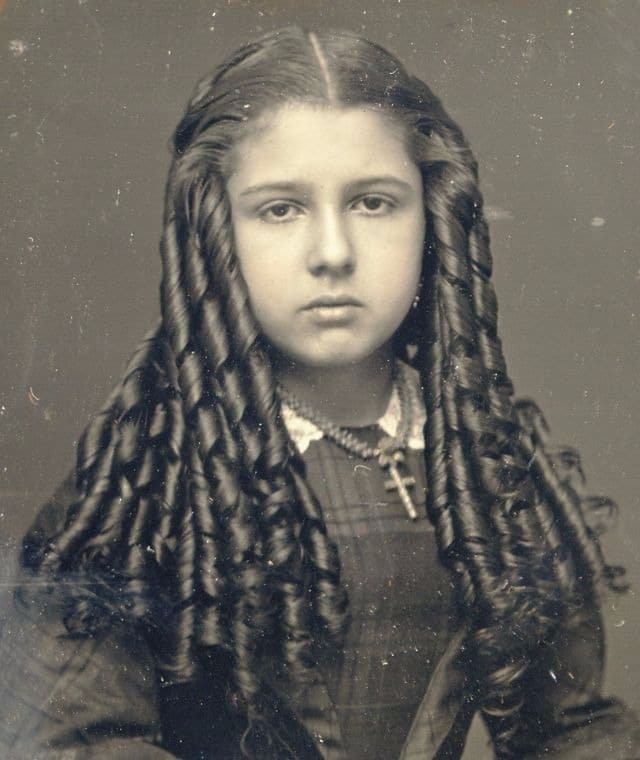
35.
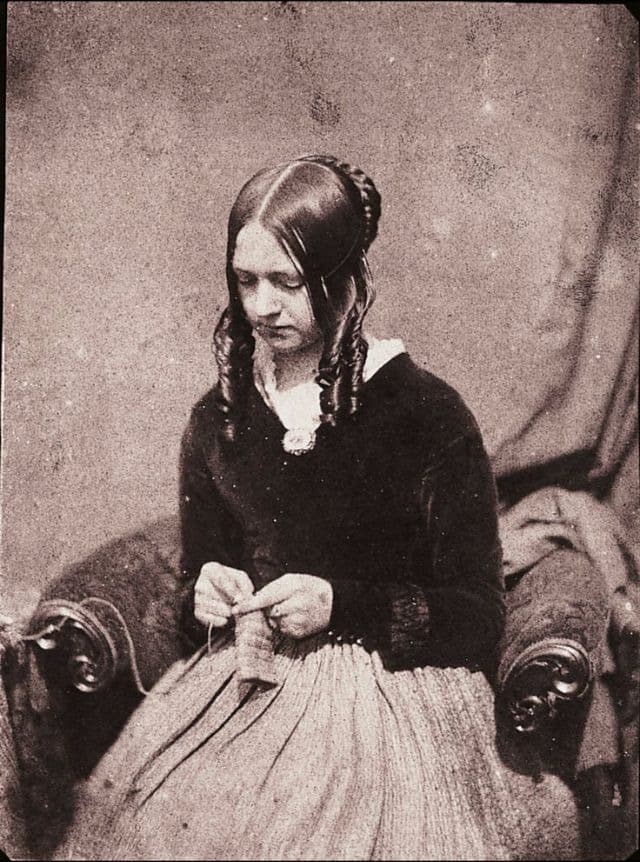
36.
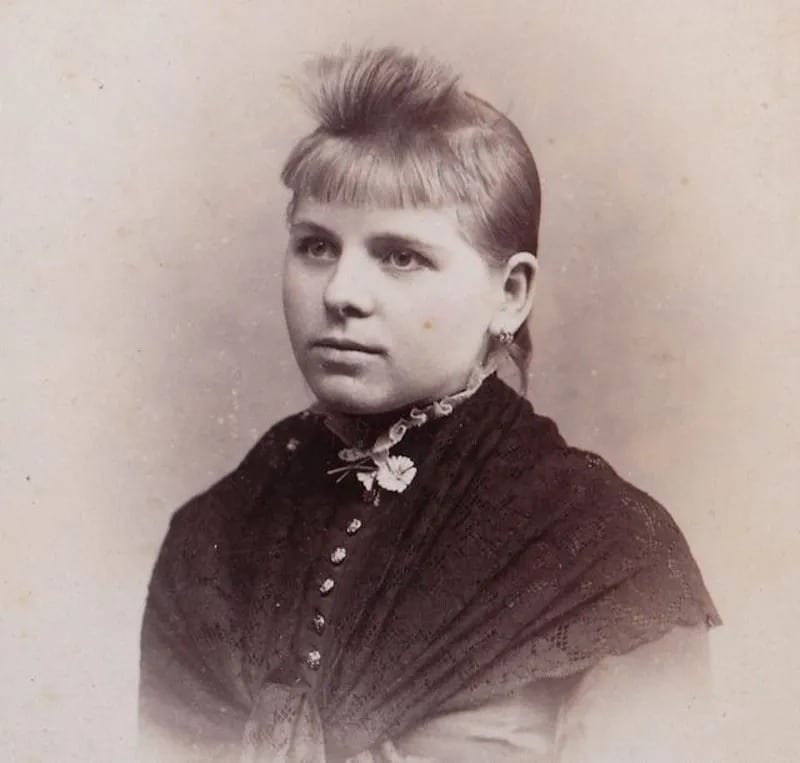
37.
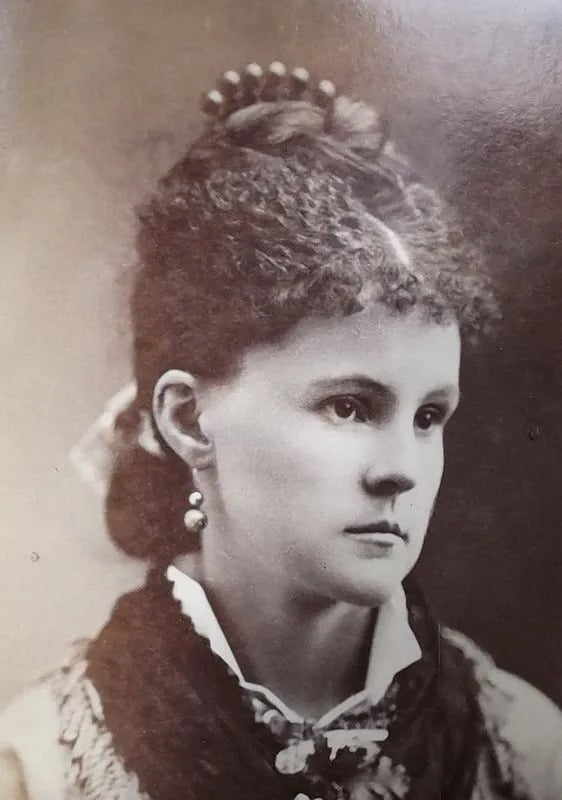
38.

39.
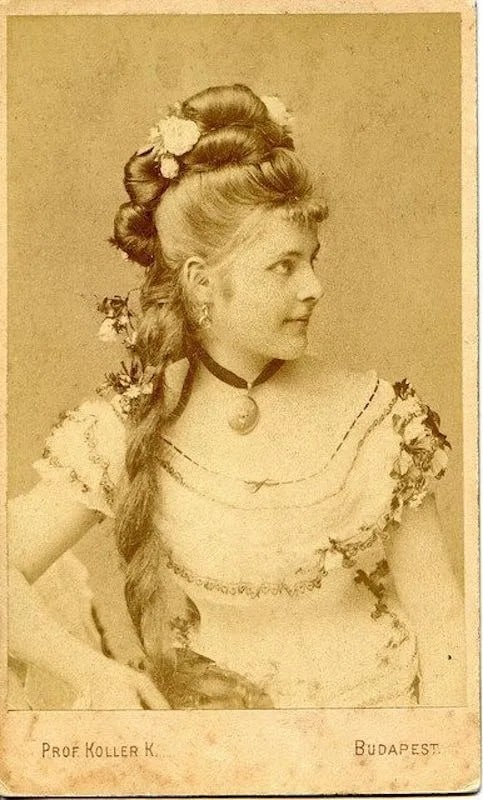
40.

41.

42.
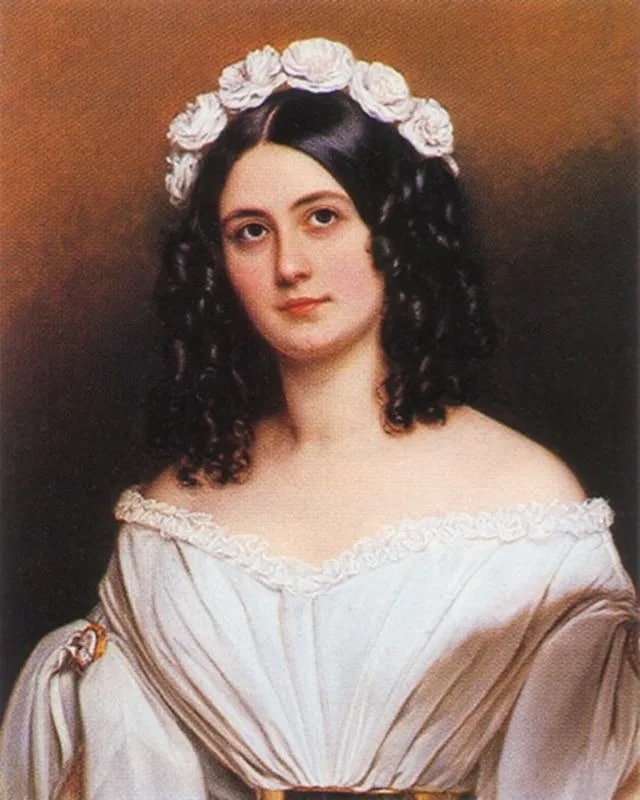
43.
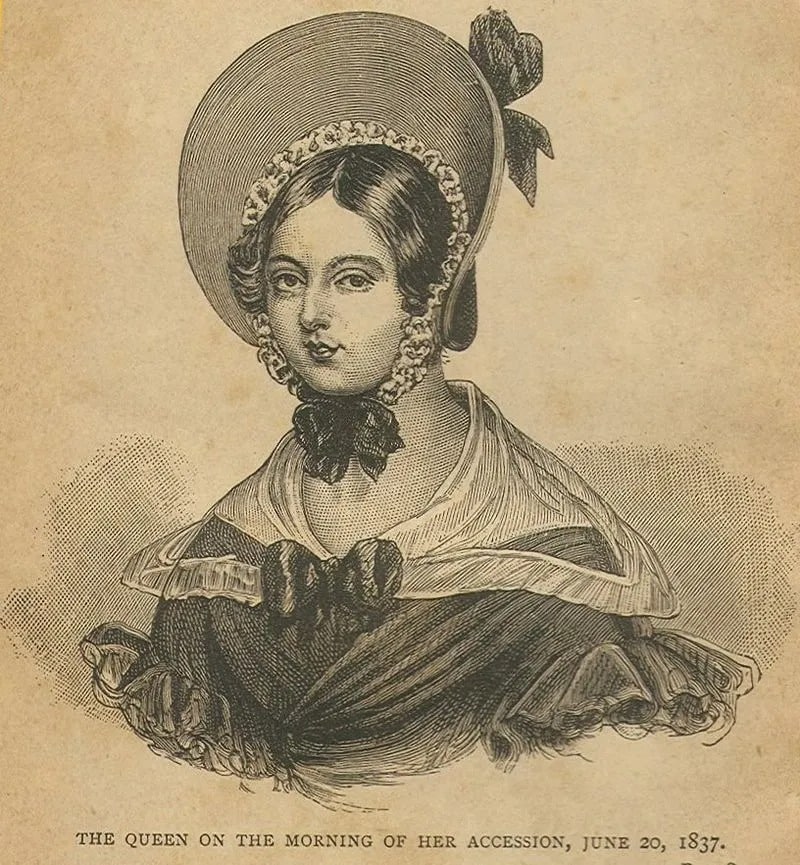
44.
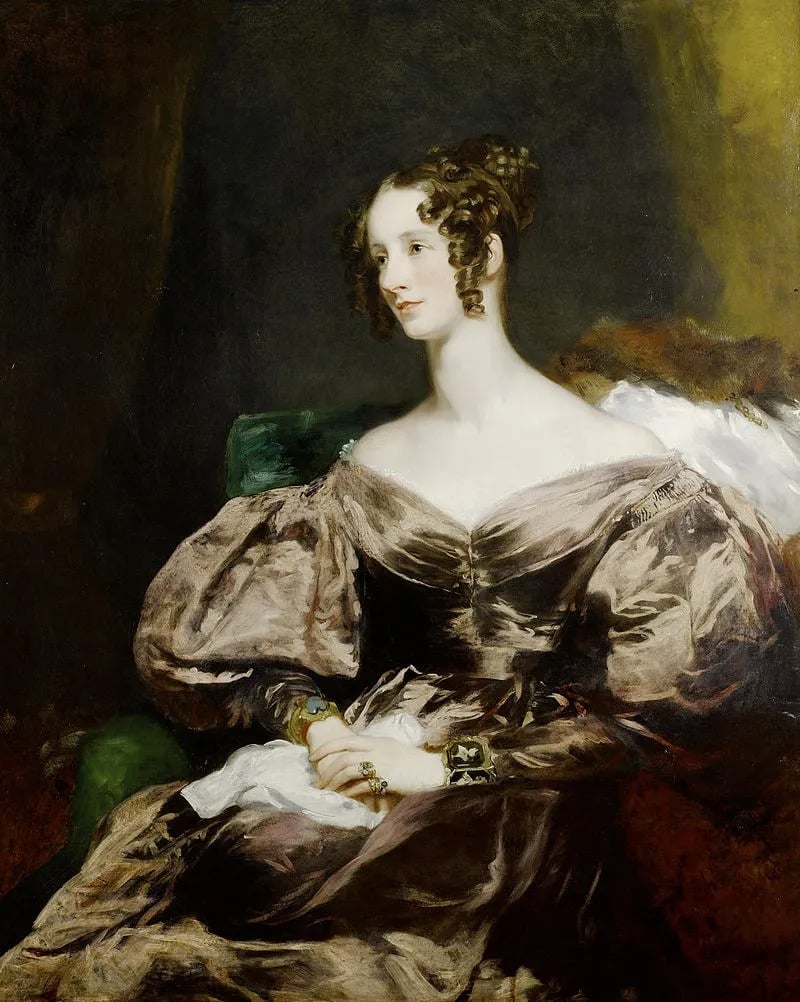
45.
